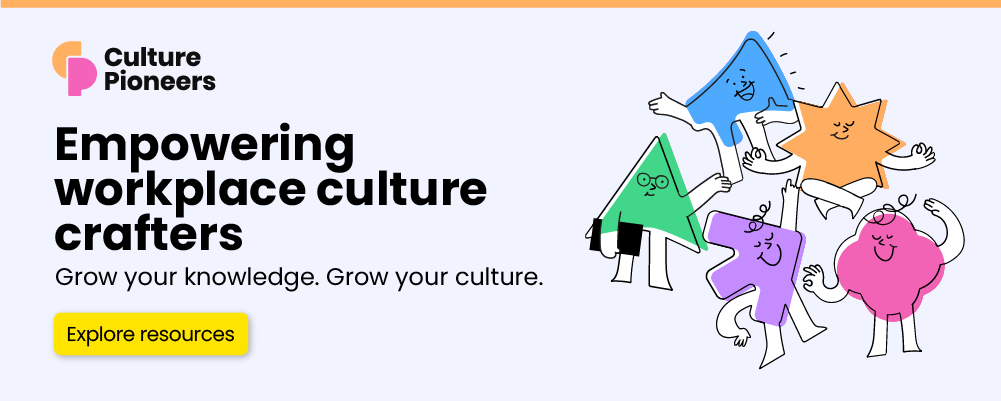In the ever-evolving landscape of business, one truth remains constant: the heartbeat of any organisation lies in its culture and its people. As senior HR and business leaders, you understand that investment in organisational culture and people isn’t just a matter of enrichment; it’s a strategic imperative with tangible returns to ensure successful organisational longevity.
In this Culture Pioneers article, we’ll delve into the significance of culture and people investment, provide actionable steps to create a compelling business case, and underscore the repercussions of neglecting this crucial aspect of organisational management.
Understanding the importance
Culture is the invisible thread that weaves through every aspect of an organisation, shaping its identity, values, and behaviours. A strong, positive culture fosters employee engagement, enhances productivity, and drives innovation. Similarly, investing in your people – their development, wellbeing, and growth – not only nurtures talent but also fuels organisational agility and resilience in a rapidly changing world.
Building the business case for workplace culture investment
Creating a compelling business case for workplace culture and people investment requires a strategic approach. Here’s a step-by-step guide to help you articulate the value proposition and secure buy-in from key stakeholders.
The cost of inaction
Failing to prioritise culture and people investment can have far-reaching consequences for both your organisation and its people. A toxic culture characterised by low morale, high turnover and disengagement not only erodes trust and collaboration but also undermines organisational performance and innovation. Moreover, neglecting the wellbeing and development of your people can lead to burnout, stress, and decreased productivity, ultimately impacting your bottom line.
Continual review and evolution of your culture business case
It’s essential to recognise that business cases for culture and people investment are not static documents; they are living, breathing entities that evolve over time.
As your organisation grows, adapts to market changes, and navigates internal shifts, so too must your business case evolve to reflect these dynamics.
It’s essential to recognise that business cases for culture and people investment are not static documents.
Dynamic environment
In today’s dynamic business environment, change is inevitable. Market trends, customer preferences, and technological advancements constantly reshape the business landscape.
Consequently, your business case must remain agile and responsive to these changes, incorporating new insights and data to stay relevant.
Continuous improvement
Just as organisations strive for continuous improvement in their products and services, so too should they aim for ongoing refinement of their culture and people strategies. Regularly assess the effectiveness of your initiatives, solicit feedback from stakeholders, and identify areas for enhancement or optimisation.
Feedback loop
Establish a feedback loop to gather input from employees, managers, and other stakeholders on the impact of culture and people initiatives. Use this feedback to identify strengths, address weaknesses, and refine your approach over time. Cultivate a culture of open communication and transparency, where feedback is valued and acted upon.
Benchmarking and best practices
Stay abreast of industry trends, benchmark against peers, and leverage best practices to inform your ongoing strategy. Benchmarking allows you to compare your organisation’s performance against industry standards and identify opportunities for improvement. Likewise, studying best practices from other organisations can provide valuable insights and inspiration for innovation.
Continuous learning
Embrace a culture of continuous learning and adaptation within your organisation. Encourage experimentation, exploration, and learning from both successes and failures. Foster a growth mindset where employees are empowered to take risks, challenge the status quo, and contribute to the evolution of your culture and people initiatives.
Flexibility and adaptability
Maintain flexibility and adaptability in your approach to culture and people investment. Recognise that what works today may not work tomorrow, and be willing to pivot and adjust your strategy as needed. Embrace change as an opportunity for growth and innovation rather than a threat to be feared.
Investing in culture and people isn’t just the right thing to do; it’s the smart thing to do.
A business imperative
In summary, business cases for culture and people investment are dynamic, iterative processes that require continual review, updating, and refreshment.
By embracing a mindset of continuous improvement, learning, and adaptation, you can ensure that your organisation remains agile, resilient, and competitive in an ever-changing business landscape.
Remember, investing in culture and people isn’t just the right thing to do; it’s the smart thing to do.







